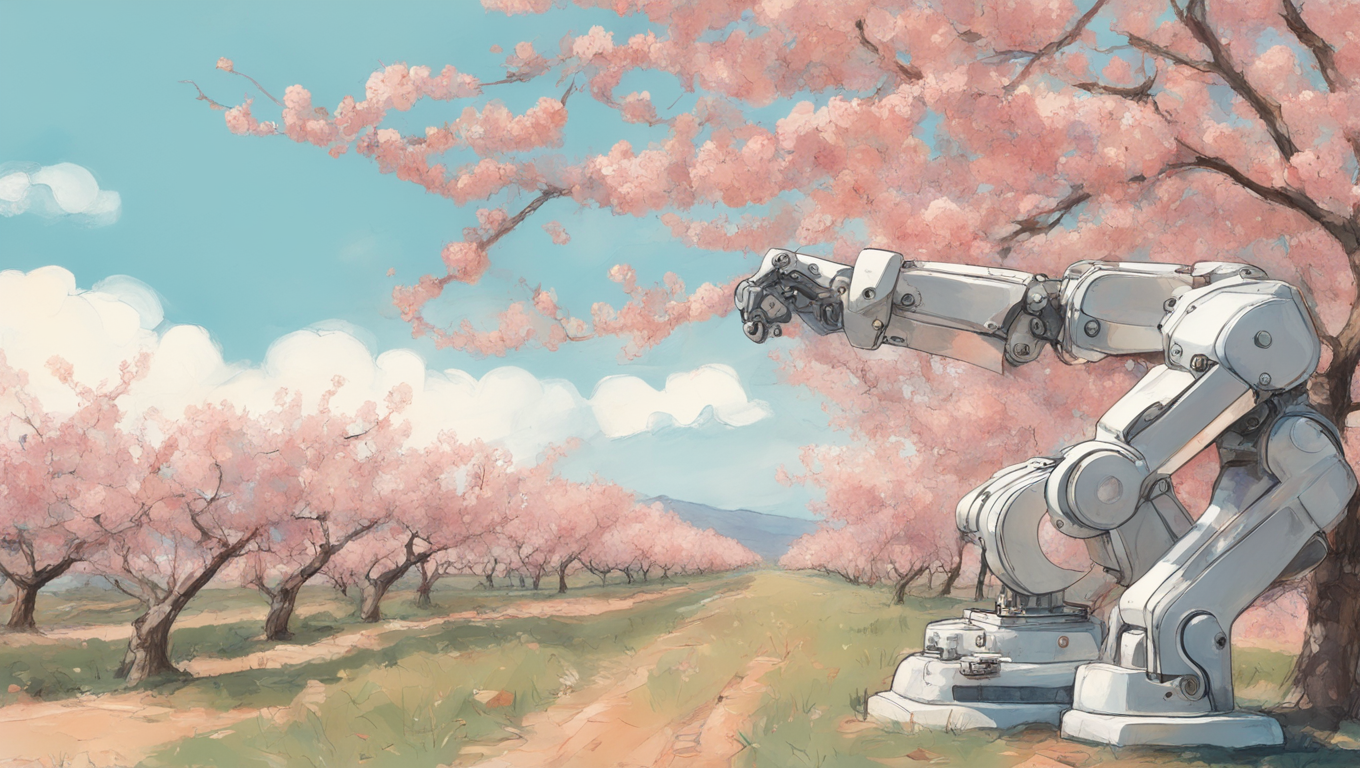In a groundbreaking development, researchers at the National Robotarium in Edinburgh have unveiled an artificial intelligence (AI) system that has the potential to revolutionize agriculture. The system is capable of accurately counting flowers on fruit trees by analyzing photos taken with a standard smartphone. By recognizing patterns and features such as the edges and shapes of petals, the AI can estimate the number of flowers on fruit trees with an impressive 90% accuracy.
The implications of this breakthrough technology are vast. Farmers can utilize this information to predict crop yields up to six months in advance, enabling them to optimize resource allocation, plan harvests and distribution, and reduce food waste. The system’s accuracy surpasses manual counts, which typically have error rates of 30-50%. This eradicates the significant margin for error that farmers face when estimating crop yields.
Fernando Auat Cheein, associate professor in robotics and autonomous systems at the National Robotarium, explained the potential impact of this AI system on traditional farming methods. “By leveraging the power of AI and the convenience of off-the-shelf technology like smartphones, our approach seamlessly integrates with traditional farming practices, making it easier for growers to embrace and benefit from innovative solutions without overhauling their existing methods.”
During trials in peach orchards in Spain, farmers were impressed by the simplicity and accuracy of the flower-counting AI. They recognized its potential to inform decisions about crop management, such as targeted pruning and herbicide application. By focusing their efforts on areas of the farm that are expected to yield the most fruit, farmers can optimize resources, reduce their environmental footprint, and maximize both the quantity and quality of their harvest.
The next step for the researchers is to compare the AI’s predictions with the actual peach harvest in September 2024. If the AI proves effective in this test, the approach could be adapted for other crops such as apples, pears, and cherries. Fruit growers in Britain, Europe, and beyond stand to benefit from this groundbreaking technology.
The impact of such technology is particularly significant given the challenges that the agricultural industry faces. Currently, agriculture consumes approximately 65% of the world’s freshwater, nearly half of which is wasted. Additionally, each year, 45% of fruit and vegetables produced for human consumption are lost or wasted. The flower-counting AI has the potential to address these issues by enabling farmers to optimize their resources and reduce waste.
The research project has been a collaboration between the National Robotarium, Federico Santa Maria Technical University in Valparaiso, Chile, and Universidad Andres Bello in Chile. The National Robotarium, as the UK’s center for robotics and AI, contributes to the Data-Driven Innovation initiative, which is supported by £21 million from the UK Government and £1.4 million from the Scottish Government. Through partnerships with industry, the researchers at the National Robotarium aim to develop solutions that address the most pressing challenges facing the agricultural sector, from improving crop yields and quality to reducing environmental impact and enhancing sustainability.
As the researchers prepare to compare the AI’s predictions with the actual peach harvest, the future of agriculture looks brighter than ever. With the ability to accurately predict crop yields, farmers can make more informed decisions, reduce waste, and improve the efficiency and sustainability of their farming practices. The fusion of AI and traditional farming methods holds the key to transforming the industry and ensuring a more prosperous future for farmers worldwide.





Use the share button below if you liked it.